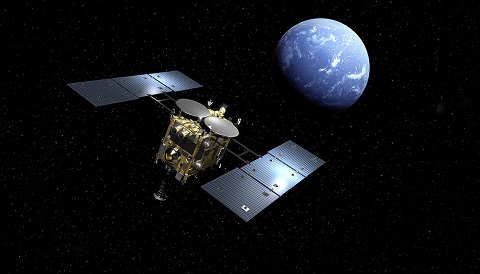After spending over a year with the near-Earth asteroid Ryugu, Japan’s Hayabusa-2 probe is getting ready to end its mission. The probe is expected to return to Earth carrying valuable samples taken from the asteroid.
Low-power thrusters on the Japanese Space Agency (JAXA) spacecraft fired, accelerating the probe to a meager 9.2 centimeters per second relative to the asteroid (slower than a snowflake falls on Earth), but that was enough to give it enough velocity to escape. It started from 20 km up, and Ryugu’s 900-meter size is too small to have much mass, which in turn means its gravitational attraction is whisper weak.
In other words, Hayabusa2 is leaving Ryugu forever, and heading back to Earth.
[Japan 08:00] At the SSOC (Sagamihara Space Operation Center), the operation for Ryugu departure has begun. A command is sent to Hayabusa2 via the Usuda Deep Space Center (UDSC) in Nagano Prefecture. pic.twitter.com/Kt2v5J5NDR
— HAYABUSA2@JAXA (@haya2e_jaxa) November 12, 2019
The mission launched from Earth on 3 December 2014, and arrived at the diminutive asteroid on 27 June 2018. It spent the next year and a half orbiting it, imaging it, taking spectra, and performing mineralogical analysis remotely.
It also dropped four small rovers to land on the asteroid’s surface. These weren’t wheeled vehicles like we use on the Moon and Mars; the gravity is far too weak for that. Instead, the rovers were all rather squat boxes that tumbled on the surface, using various mechanisms to roll around and take amazing close-up images of the rocks littering Ryugu.















